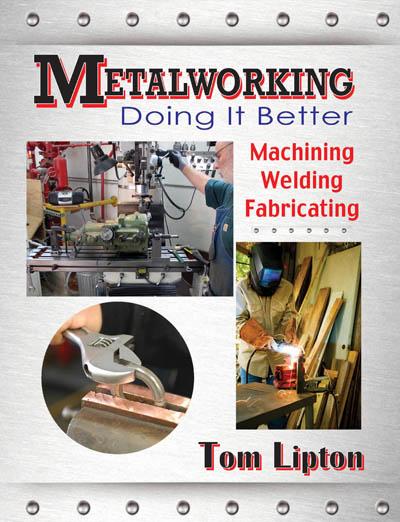
Published by Industrial Press Inc. and written by Tom Lipton, "Metalworking — Doing It Better" is an invaluable guide to both novice and veteran metalworkers. In particular, it is aimed toward both those who work in small shops and those who are enthusiasts developing projects in their garages, yards and basements.
The book covers hundreds of techniques. These creative and unique techniques have been shop-tested by the author the old-fashioned way, through repitition and hard work.
It features hundreds of four-color photographs throughout. The author personally photographed them to illustrate the methods he describes in the book. The guide has been designed so that in virtually every case, the tips and supporting photos appear together on the same page.
Many of the topics address specific trade skills, working with manual and CNC lathes and mills, as well as welding flame straightening, sheet metal, sanding, grinding and abrading. Early chapters focus on general across-the-board skills, including essential shop math and trigonometry, accuracy, speed, drawing and sketching. One chapter helps readers with shop basics, such as finding the right floor and lights, heating and cooling, workbenches and tables, air supply, storage and handling of raw materials.
The book is written in a folksy, personal perspective, so the tips and techniques are presented as an ongoing, informal conversation between the author and the reader.
Contact Details
Related Glossary Terms
- computer numerical control ( CNC)
computer numerical control ( CNC)
Microprocessor-based controller dedicated to a machine tool that permits the creation or modification of parts. Programmed numerical control activates the machine’s servos and spindle drives and controls the various machining operations. See DNC, direct numerical control; NC, numerical control.
- grinding
grinding
Machining operation in which material is removed from the workpiece by a powered abrasive wheel, stone, belt, paste, sheet, compound, slurry, etc. Takes various forms: surface grinding (creates flat and/or squared surfaces); cylindrical grinding (for external cylindrical and tapered shapes, fillets, undercuts, etc.); centerless grinding; chamfering; thread and form grinding; tool and cutter grinding; offhand grinding; lapping and polishing (grinding with extremely fine grits to create ultrasmooth surfaces); honing; and disc grinding.
